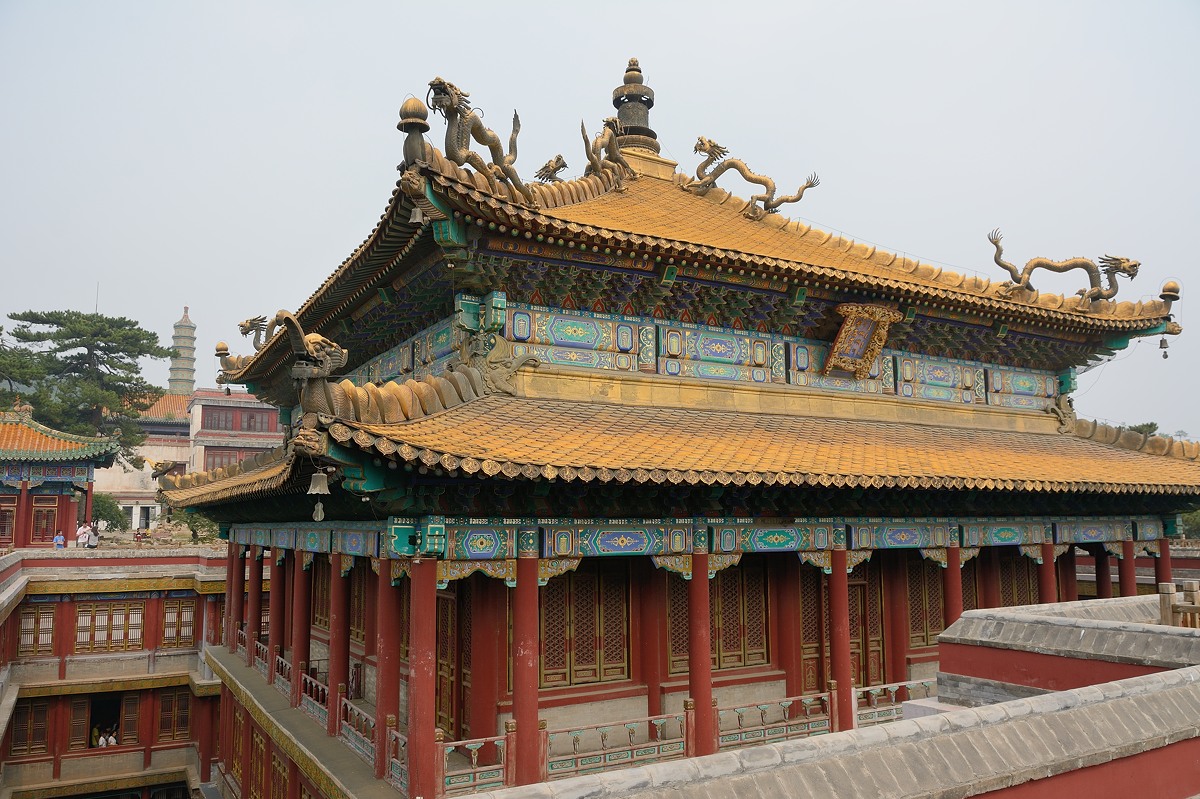On day 2 of our Chengde trip we visited most of the 8 temples built there.
This is in Puning Temple - built in 1755. Puning means universal peace.
It is an active temple as seen by the large number of offerings in the incense burner.
Here is a link to day one in case you missed it. ===> Chengde Day 1
This is a prayer wheel. If you aren't sure which way to turn them they offer a handy arrow to guide you.
This is another view of the temple from a lower level. The smoke you see is from the incense burner in the first picture.
Another view from near the top.
We have seen the masses of locks before. The locks are inscribed with a couple's names and then locked to the post in the temple as a testament to their undying love.
This is us.
You aren't allowed to take pictures inside the halls. I took this one from outside as you see.
This is a corner of a large tablet. The tablets here are generally inscribed with 4 languages - Chinese, Manchu, Tibetan, and Mongolian - in deference to the 4 major ethnic groups ruled by the Emperor.
The outlying temples were built as a sign of respect and to facilitate the religious practices of visitors to the Mountain Resort.
At the time, Mongolian and Tibetan Buddhism were very similar and the visiting officials were very religious.
This is the Putuo Zongcheng Temple. It is influenced by the Potala Temple in Lhasa, Tibet.
Many of the windows are solid and not really windows at all.
This picture and the next several are part of the Xumi Fushou Temple. It was built in 1780 to make the number 2 in the Tibetan religious heirarchy, the Panchen Lama, feel at home during his visit.
Another hall in the temple.
I snuck a couple of pictures as we walked up to the top of the temple.
Same with this one.
Click to enlarge.
This building, Jixiangfaxi Hall, was the home of the Panchen Lama when he visited.
The Panchen Lama died of smallpox in 1780 in Beijing after his visit.
Here is another view. That is the pagoda from the Putuo Zongcheng Temple in the background.
After lunch we took a long cable car ride up to Sledge Hammer Peak or Qìng chuí fēng.
Geologically, it is similar to Arches National Park in Utah.
Along the way, we passed this grave.
Here is a closer view from the path up to the base. The part sticking up is about 120 ft tall from the base.

This is in Pule Temple.
This is Zhongyin Hall in Pule Temple. It was end of the day and the light was very nice, I thought.





















No comments:
Post a Comment